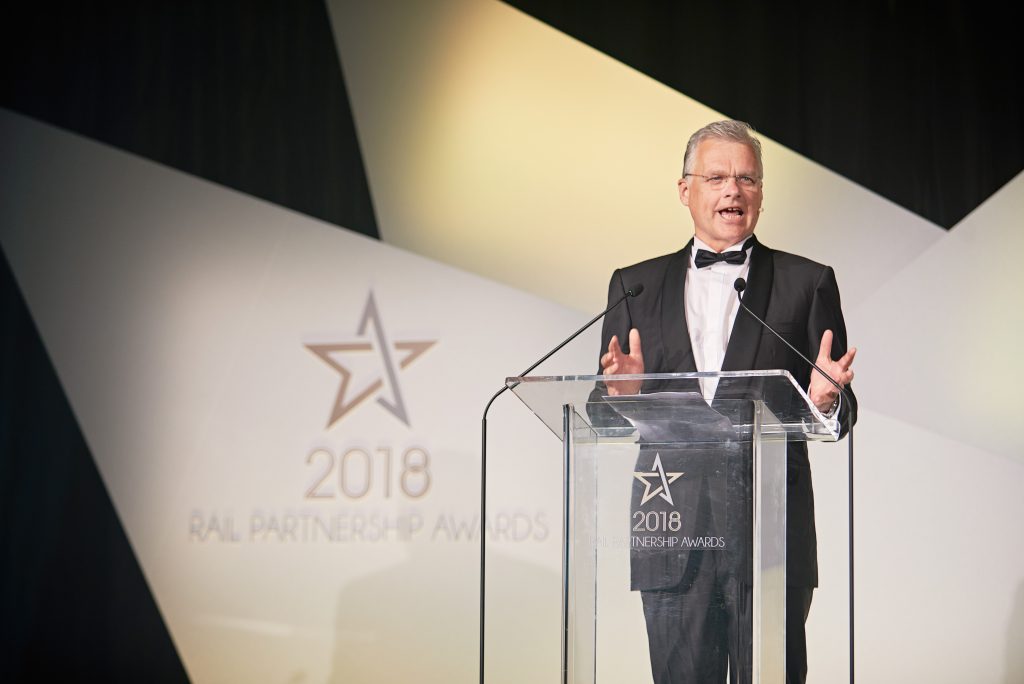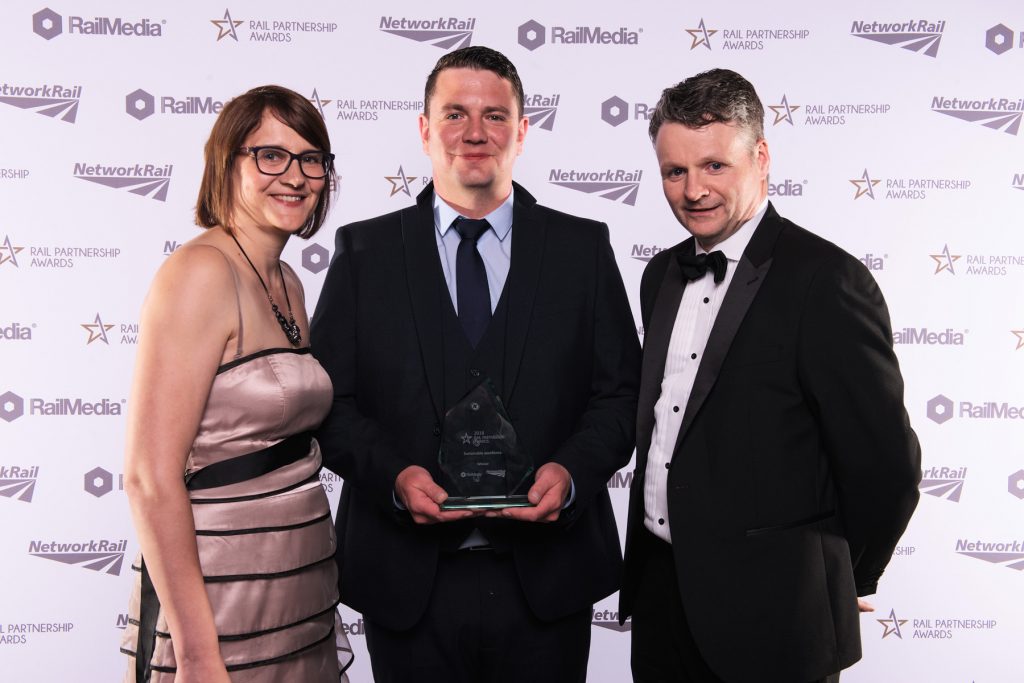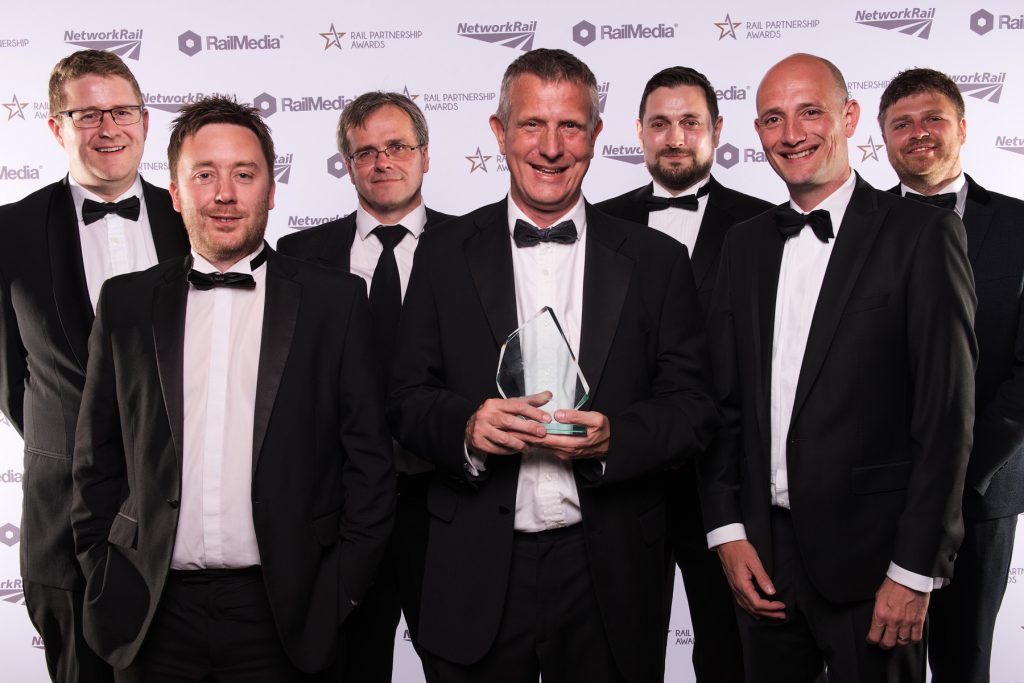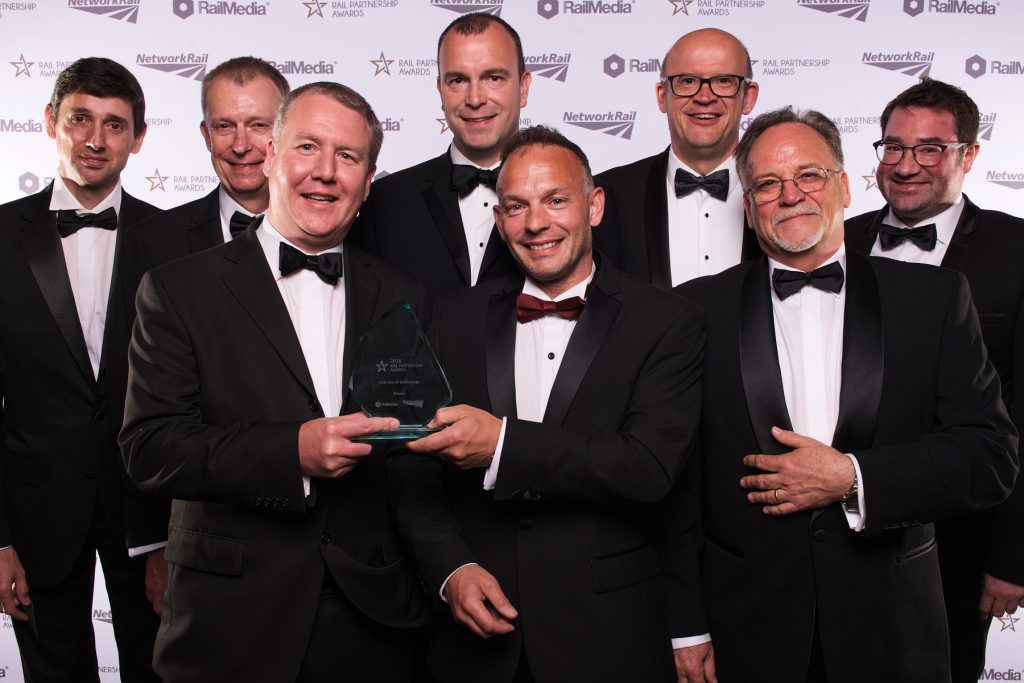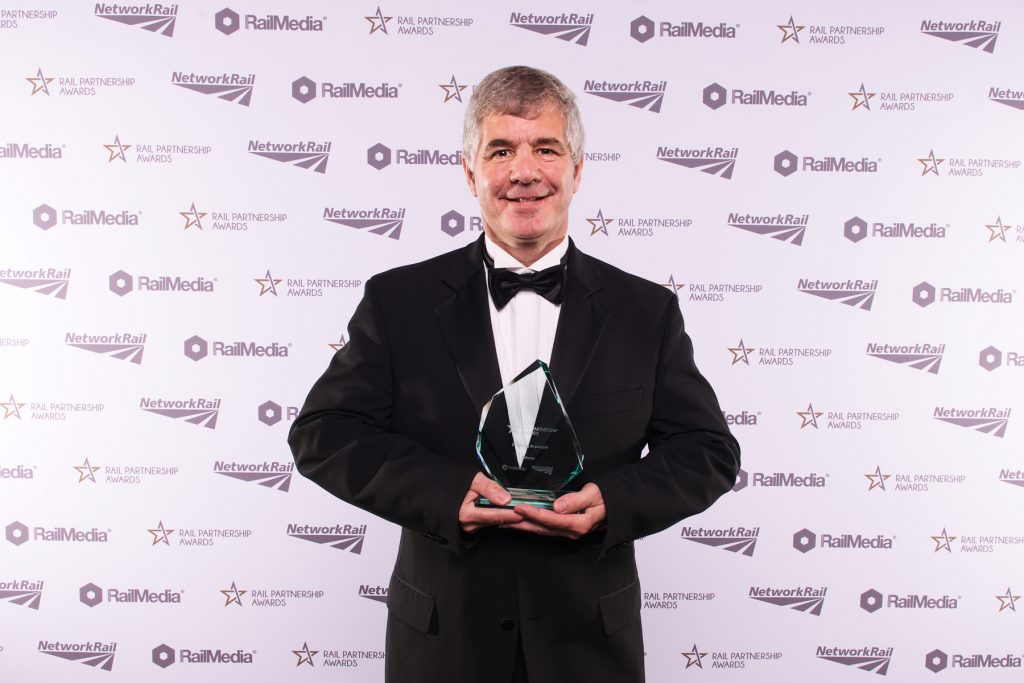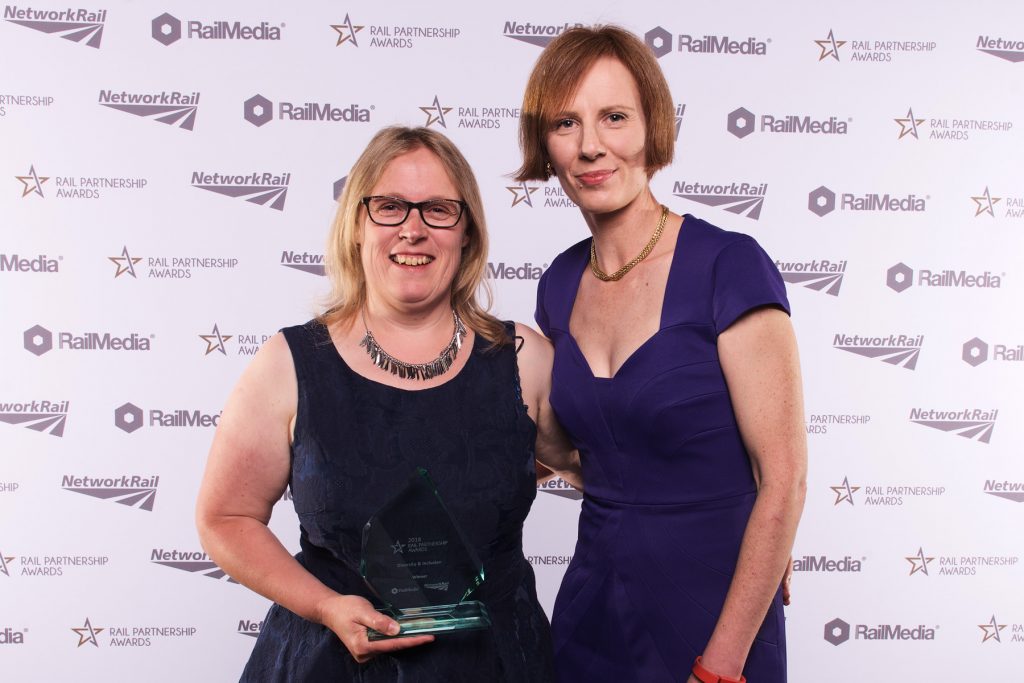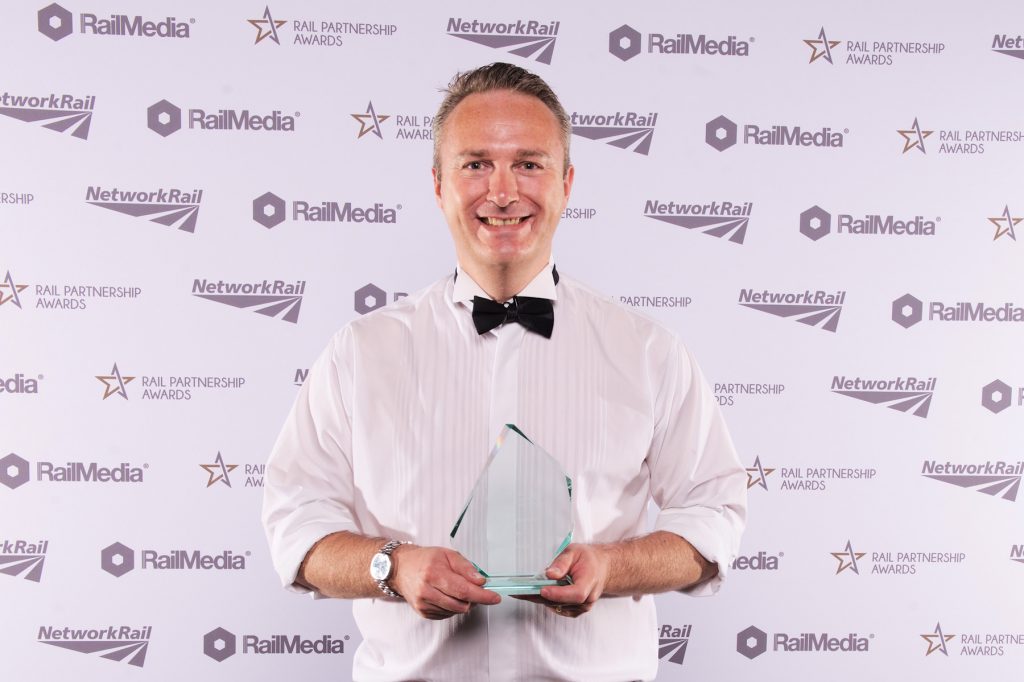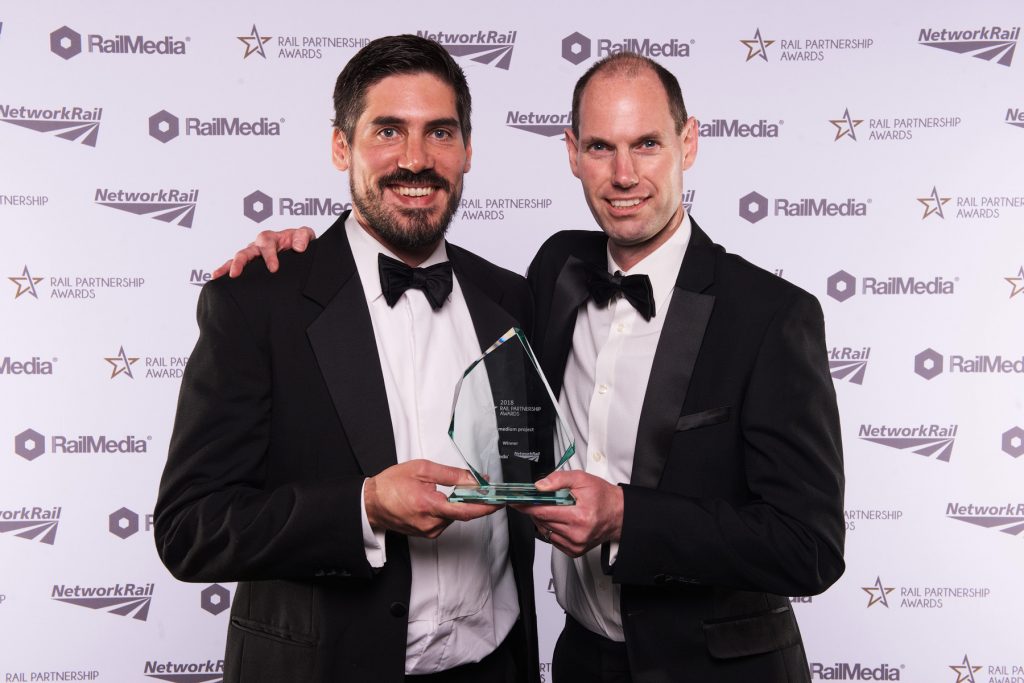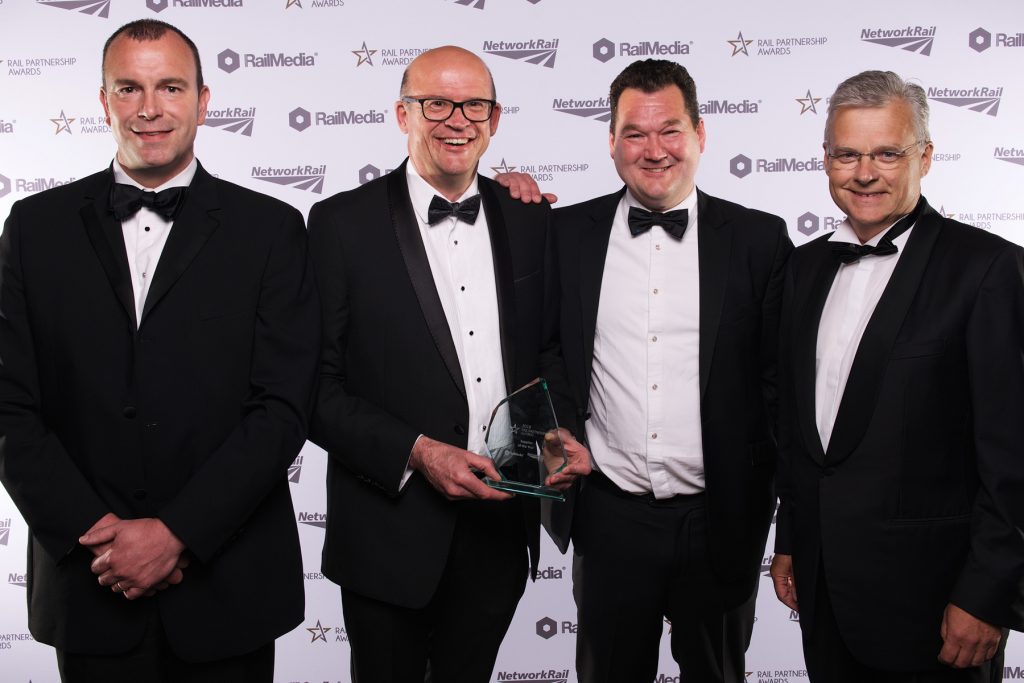From state ownership under British Rail to its break-up into more than 100 privately owned companies and the transfer back of infrastructure to the arms-length public body Network Rail, the control of Britain’s railways has a long and well documented history.
Now, particularly over the last year, considerable effort has been made to harmonise this relationship between the public and private sectors to exploit the benefits from each. In October, the Rail Delivery Group launched ‘In Partnership for Britain’s Prosperity’, which saw Network Rail, its suppliers and train companies setting out a single, long-term plan to improve the railway.
Following that, transport secretary Chris Grayling set out proposals to bring the operations of publicly owned track and privately run trains closer together in new regional partnerships, as set out in the Department for Transport’s (DfT) ‘Strategic vision for rail’, which was released in November. The East Coast Partnership will be the first such arrangement from 2020.
Fast forward to March this year and – as well as the DfT’s call for private investors in the country’s railways – Network Rail announced the return of the Rail Partnership Awards to celebrate companies in its supply chain and encourage more innovation. Working with Rail Media, and in conjunction with Bollé Safety and Systra, this new-look ceremony took place on June 7 at the Vox Conference Centre in Birmingham. 15 awards were presented on the night – including the coveted ‘Supplier of the Year’. And the timing of its resurgence, as greater emphasis is placed on nurturing partnerships between the public and private sector, is no coincidence.
Tempered celebrations
Following Network Rail’s National Supplier Conference in the afternoon, more than 500 representatives of companies of all sizes made their way to the awards ceremony in the evening in the hope of landing one of the prizes on offer. Outgoing Network Rail chief executive Mark Carne – who will be replaced by Civil Aviation Authority boss Andrew Haines in the autumn – introduced the evening with a keynote address following a handover from the host, television presenter Alexander Armstrong. The night of the Rail Partnership Awards was the result of months of work in the build-up but, as Mark Carne explained, events in the days preceding it framed the celebrations in a different context.
He said: “It’s just wonderful to see so many people here tonight with a shared purpose of celebrating what we can achieve when we work together.
“But, before I say any more about why partnership is so important, I also want to acknowledge this week in particular where we have fallen short. A colleague working for us in Scotland lost their life in an industrial accident, a young life, full of promise and opportunity lost, and a family, part of the railway family, left grieving. Like so many accidents, this seems likely to be the result of a combination of small, isolated failures that combined in the most dreadful way.
“Together, tonight, we must resolve as leaders in our industry to learn the lessons from this tragedy and to make our mantra of everyone home safe every day a reality and not just an aspiration. We owe it to that young man, we owe it to the thousands of workers in our industry who look to our collective leadership.
“The last two weeks have also been very difficult for many passengers on the network. As an industry, we did not fulfil the promises we made with the May timetable change. Now I’m not going to explore the reasons for this today, they are multiple, complex and interrelated across the whole industry. Just like in safety, small, isolated failings have combined in a way that has not delivered the performance customers rightly expected of us.
“When we work together, we can eliminate the small isolated failings that can combine in ways that we had not expected or hoped for.”
Down to business
After the speeches, it was down to the business end of the night. Each of the 14 categories were open to organisations, teams and individuals – excluding Network Rail – who had worked with ‘Team Orange’ from January 2017 until April 2018. Nominations were made online, with the option of submitting an entry into more than one category, and judged through two stages.
Initially, a team of Network Rail specialists produced shortlists for each category, with companies such as WSP, J. Murphy & Sons, Buckingham Group, Amey and Siemens featuring prominently. A final judging panel, including senior representatives from Network Rail and third parties such as the Railway Industry Association, the Railway Heritage Trust and the DfT, then selected the winning entries, the runners-up and the highly commended submissions.
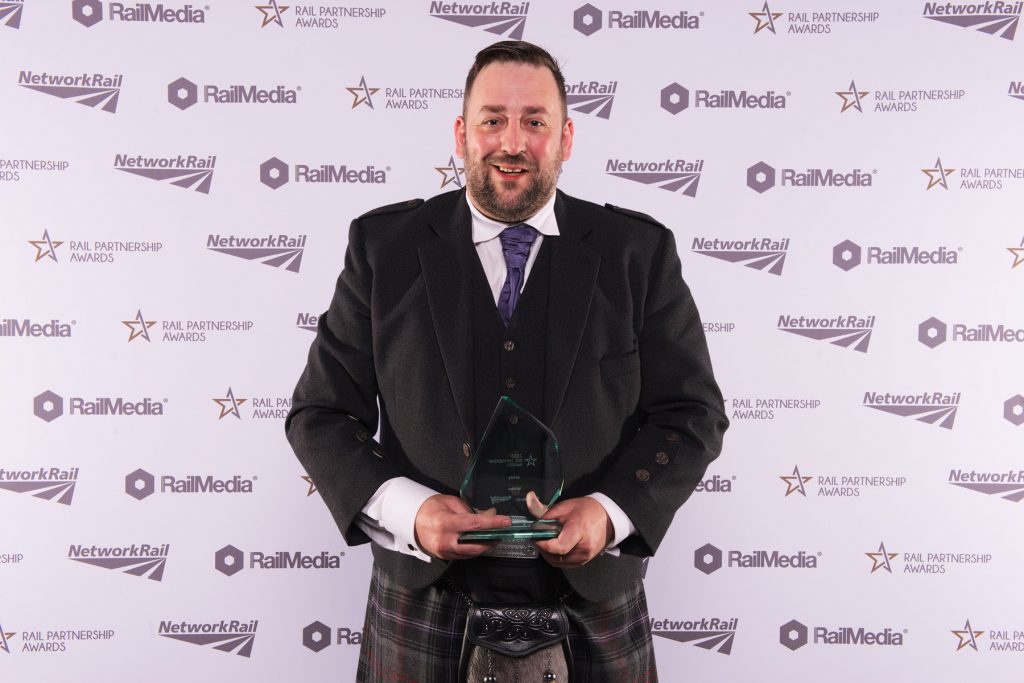
Safety
Mark Carne often describes safety as his number one priority and it was fitting that this was the evening’s first award.
The British Transport Police was the recipient for its incident response stretcher project in Scotland. This piece of equipment runs on a single railhead and has been designed to support officers and staff deployed to fatalities on the railway to allow them to work in a safer, dignified and efficient manner when carrying out recovery duties. It stemmed from a particularly physically demanding recovery in 2016 when a team had to carry a deceased person in inclement weather over an extended distance to the nearest safe access point.
Equipped with no budget but only goodwill and charm, a prototype was developed by folding bike manufacturer Kinetics using a stretcher donated from the Scottish Ambulance Service and a wheel from a disused sandite machine. The final product is now being used around the network. Not only does the stretcher help to reduce officers’ physical fatigue, it saves time, increases professionalism and provides more dignity for the deceased.
Vital Human Resources was the runner-up in this category for its safety conversation vehicles. These vans, of which Vital has three, come fitted with seating space, TV screens, a personal protective equipment (PPE) store and an extendable canopy, allowing safety briefings to be conducted under shelter regardless of the weather conditions.
Highly commended for the Safety Award was the S&C south Alliance (Colas Rail, AECOM, Network Rail) for its successful ‘Focus on Safety’ campaign in 2017. This saw safety performance improve by more than 80 per cent year-on-year.
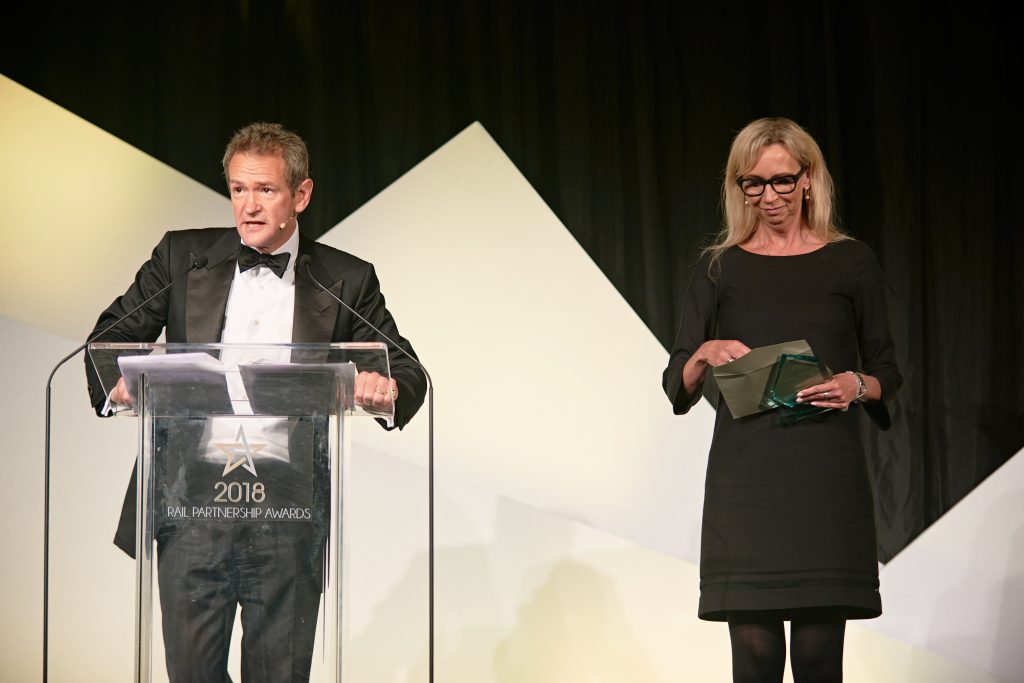
Community Engagement
Formed in 2016, Friends of Ally Pally was established to create a community garden at Alexandra Palace station in the London Borough of Haringey. It started out by asking commuters to donate plants and pledge to look after them by emptying bottles of water into the station’s pots and planters on their daily commute.
There are now more than 40 different planters at the station and the volunteer group has since organised various events, such as Christmas carol services and gardening parties, to make the station a hub for the local community.
But it was the volunteer group’s ‘Sleepers Awake’ project that bagged them the Rail Partnership Award for Community Engagement. With the help of DIY enthusiasts, old railway sleepers and a supply of hot drinks, the project saw six new benches constructed for use at the station. Judge Caroline Murdoch, Network Rail group communications director, accepted the award on behalf of the Friends of Ally Pally who were not present on the night.
BCM Construction was the runner-up for upcycling old cable drums into picnic tables for schools as part of the Sussex Route Traction Power Supply Enhancement programme. CrossCountry was highly commended for its Cub Scout Personal Safety project to educate youngsters on rail safety.
Sustainable Excellence
Sustainability has a large remit and this was reflected in the category, with entries ranging from working efficiently with lineside neighbours to reduced waste and recycling innovations or, in the winners case, an off-grid, hybrid energy solution. This joint Panasonic Business, ADComms and PowerOasis project seeks to replace the decidedly eco-unfriendly diesel generators that are commonly used to provide power for trackside telecoms infrastructure in rural areas of the network with something that is cleaner, greener and quieter.
Diesel generators require regular monitoring and topping up with fuel but this solution, which uses twelve 250W solar panels that are connected to a 235Ah Li-ion battery, supplemented with a 6kW diesel generator, can be monitored remotely. During a three-month pilot project for Network Rail in Worlaby, Lincolnshire, significant cost savings were reported.
Elsewhere, Vinci Construction was the runner-up for its community work and for striving to reduce road traffic and noise pollution as part of the Filton Bank four-tracking programme. Q Sustain and NG Bailey were highly commended for contributing to Birmingham New Street becoming the first BREEAM-rated station as part of its Low Carbon Combined Heat and Power scheme.
Preserving the History of the Railway
The work to restore or reconstruct the country’s great railway tunnels, viaducts and bridges, many of which were built during the Victorian era, features prominently in Rail Engineer. Eagle-eyed readers will remember a recent report on the “architectural gem” that is Carlisle Citadel station. Contractor Galliford Try has undertaken major work to rejuvenate the station’s ailing roof and the project pipped the competition to the top title in this heritage category.
The recent roof improvements were possible thanks to a huge scaffolding deck that was installed nine metres above the tracks through the station. It protected the station’s platforms and running lines, it provided safe access for the workforce and, with the glass removed from the roof, this waterproof deck also kept the station platforms dry. The result of this project has been a greatly improved station that retains its historic neo-Tudor and neo-Gothic characteristics and continues to provide a fitting gateway to the border city.
Judges picked AMCO-Giffen’s work to maintain and ensure that the Grade II-listed River Witham bridge in Lincolnshire – the only operational bridge with cast iron box girders in the world – meets modern day specifications, as the runner-up. CML (Construction Marine Limited) was highly commended for the challenging strengthening and repainting works at Sleaford and Worksop’s ‘lattice’ main girder type footbridges.
Driving Efficiencies
BCM Construction scooped the Driving Efficiencies trophy for establishing ENABLE, a consortium of SMEs that acts as a ‘one-stop shop’ for small infrastructure projects. Launched in 2017, the association is made up of: BCM Construction, Equate Design, Crewit Resourcing and CHS. BCM brought the group together to resolve challenges that face SMEs in the industry. One big problem is competing for scarce supply chain services when industry giants are demanding the newest and best plant, the best designers and the best labour resources. By vertically integrating key services, BCM is able to guarantee that clients’ demands can always be met.
Aspin Group’s latest piling innovation, which tackles subgrade problems quicker, and Siemens’ low-cost, digital-ready signalling solution on the North West Coast, were the runner-up and highly commended respectively.
Best Use of Technology
Best Use of Technology proved to be the first in a flurry of honours for Siemens. The implementation of the Thameslink programme was the one to steal the limelight. This £7 billion scheme was carefully phased to ensure that a reliable service would be maintained as new signalling and control systems were introduced, with Siemens – which is supplying all of the new rolling stock, train control and signalling systems – and Network Rail working in close collaboration to deliver the High-Capacity Infrastructure (HCI) programme. From contract award, this collaboration was identified as a critical factor in the delivery of the programme, with passengers now benefiting from more connections and faster, more frequent journeys.
The HCI programme provides the necessary European Train Control System (ETCS) and enhanced signalling control systems to support automatic train operation (ATO) and timetable management so as to reliably achieve the required 24 train paths an hour. On 17 March, operator GTR successfully ran the world’s first train operating ATO over ETCS on the mainline railway in passenger service. The southbound eight-car Thameslink train brought itself to a halt automatically at St Pancras station at 13:53, having transitioned into ETCS Level 2 Full Supervision and then ATO on its approach from Kentish Town.
Cyberhawk Innovations was the runner-up for drone infrastructure inspection work, which has helped to keep technicians out of hazardous environments and has resulted in significant cost savings. Omnicon Balfour Beatty was highly commended for its in-cab flexible train arrival point.
Best Collaboration
At the midway point of the evening, Great Western Railway (GWR) bagged Best Collaboration for the Western Alliance, which has seen large-scale improvements on the Great Western franchise by working more closely with Network Rail.
Although two separate businesses, the Alliance between Network Rail’s Western route and GWR has seen the two align their priorities. 14 areas have been identified for specific performance improvement plans that explain what it is doing to tackle certain issues. The plans cover track, non-track assets, severe weather, structures and autumn, network management, external, engineering (fleet), drivers, onboard, train service delivery and train planning, stations and TOC on TOC, unexplained and subthreshold.
In addition, January 2018 saw the culmination of months of hard work by the Western Alliance to launch a new timetable, with customers benefitting from additional capacity and new electric trains. Successful introduction was dependent on complex infrastructure enhancements, including testing and commissioning of the overhead line electrification between Didcot and Maidenhead, as well as the successful introduction of the new trains into service. These new services marked a major milestone in the modernisation of the Great Western main line and follows Network Rail’s successful work to electrify rail lines between Paddington and Didcot.
The S&C North Alliance (Amey, Rhomberg Sersa and Network Rail) was the runner-up and One Team Wessex (Osborne and Network Rail) was highly commended.
Investing in People
To attract and retain high calibre members of staff, Buckingham Group created a class-leading learning and development programme to meet the specific needs of its growing construction division. Following the successful development and implementation of a competence assessment system in its rail sector, Buckingham Group decided to expand it across the whole business and introduced a tailored training programme to support long-term staffing needs.
The Group then introduced an entry-level development programme to attract, develop and retain school leavers and college and university graduates. To appeal to school leavers, it developed an apprenticeship focused on civil engineers, which it has expanded to cover the wide and varied professions represented in its business. Buckingham Group also focused on working with higher education providers to identify and attract high calibre, self-motivated graduates from diverse gender and ethnic backgrounds.
For this commitment to developing its rail staff, Buckingham Group was awarded the Investing in People prize. Amey, the first in the industry to gain ‘Leaders in Diversity’ accreditation, was the runner-up and WSP was highly commended for driving much-needed diversity in the sector.
Diversity and Inclusion
As mentioned previously, organisations were able to submit the same nomination in more than one category. Amey and its ‘Creating better careers’ submission might have missed out on the Investing in People trophy but its work stole the show in the Diversity and Inclusion category.
One of the UK’s biggest public sector suppliers, Amey has proactively used its influence to drive change in the sector and has put diversity and inclusion at the heart of the business. Through the internal action group Women at Amey, as well as LGBTA, a disability group and mental health ambassadors, the company is working towards gender parity. Amey is also working with Girl Guiding UK to provide a bespoke engineering badge. Aimed at 5-14 year-old girls, the badge is designed to help young women explore different aspects of an engineering career with a focus on rail and road, so they can recognise the career options for engineers in the sector.
A Royal Academy of Engineering 10-step signatory since 2015, Amey’s plan of engagement and investment is actively increasing the number of female engineers it employs, with 18 per cent of female employees now in STEM roles and three women appointed to the executive team – including the managing director of the rail division.
Runner-up was BAM Nuttall for attracting, developing and retaining female members of staff in the industry and highly commended was Siemens for its Military to Rail programme.
Putting Passengers First
London Bridge station has been one of the industry’s greatest success stories from the past year and it was inevitable that some of that work would feature at the Rail Partnership Awards. Lead design consultant WSP has had a comprehensive role in the station’s development, from early feasibility in 2008 to the final
stages, as it has supported the contractor to re-open platforms and retail areas to the public.
WSP has provided system migration planning for the entire Thameslink programme, track remodelling, station design and electrical track equipment.
Its complex staging solution for KO2 (Key Output 2) enabled Network Rail to deliver a re-designed London Bridge station, with a throughput of 18 trains per hour, within five years and with minimal disruption to passengers.
Through the early collaboration of its operations, constructability and systems engineering teams, it helped to give Network Rail certainty that the Thameslink programme could be delivered while keeping London Bridge station operating for its 54 million annual passengers. With all 15 platforms reopened on schedule to the public in January 2018, London Bridge can now serve 96 million people a year.
WSP’s Birmingham team was the category’s runner-up for its work to upgrade Coventry station while STM Group was highly commended for its supply of safety and security personnel to the industry since 2008.
SME of the Year
This new award has been added to the programme to recognise outstanding SME suppliers that have annual turnovers of
less than £25 million. The first company to take the title was Rail Safety Solutions (RSS). In its entry, RSS said it has focused on technological innovations to boost safety and productivity since the business became a subsidiary of Auctus Management in 2012.
RSS was the first company in the rail sector to use a specialist driver awareness warning system. This tool is a dash-mounted device that focuses on the driver’s retina and measures their blinking pattern, sounding warnings if signs of drowsiness, fatigue or inattention. RSS has fitted the system to all of its vehicles that are used for transporting labour to sites.
Continuing on the theme of vehicle safety, the company unveiled a new seat belt cover design in response to passengers and drivers not using their seatbelt. These covers are made out of the same high-visibility material used for PPE. RSS says that these covers have acted as a reminder to drivers and passengers and the move has resulted in an increased usage.
RSS is also one of the UK’s first rail agencies to develop a mobile app that allows drivers and workers to submit close calls and raise safety concerns.
BCM Construction, which specialises in a combination of civil works and power systems, was the runner-up in this category while Train2Protect International was highly commended.
Best Small Project of the Year
Best Small Project of the Year was one of the most hotly contested categories. No fewer than 18 entries were shortlisted for this award but Story Rail and its work at Eden Brows pipped the competition.
Network Rail set Story the challenge of saving the Settle-Carlisle line following a 500,000-tonne landslip that closed the route. The issue at Eden Brows was a complex one that required a robust ground model to be developed so that the correct solution could be designed, developed and delivered in a challenging location to challenging timescales.
The railway is located some 200 metres away from and 60 metres above the River Eden. During the storms of 2015, a historic landslide reactivated, with movement occurring at a depth of around 15 metres between the river at the base of the embankment and the railway. This resulted in large movements of the rail embankment and upside tracks, forcing the closure of the line.
As the landslide on which the railway was constructed had reactivated, a solution was designed to allow the railway to be reopened whilst the landslide continued to move. This was completed in the form of an anchored, contiguous bored pile wall that was ‘socketed’ into the intact bedrock below the failure, allowing the structure and railway to be stable whilst the landslide continued to move. As the railway line could now be safely opened, the second phase of the project was to fix the failures at the toe of the landslide on the river bank and carry out deep drainage works to improve the stability of the lower slopes, reducing movement and scour into the River Eden.
Spencer Group’s Finsbury Park Phase 2b project was highly commended and AMCO-Giffen was named runner-up for its Liverpool high-level neck repairs.
Best Medium Project of the Year
Siemens was awarded best medium project for its work on Birmingham New Street (BNS) Phase 4&5.
Between April 2016 and March 2017, BNS was one of the top-six busiest stations outside of London, with 62 million annual passenger entries and exits. It was also the busiest interchange station outside of London, with nearly 170,000 passengers changing trains daily.
BNS’s power signal box handles approximately 80 per cent of the daily total services to Birmingham, including long-distance trains from Euston to the North, services from the South and South West to Scotland, Newcastle and Manchester/Liverpool and the East-West services to the East Midlands, East Anglia and North, West and South Wales.
Rail travel between Birmingham and London is predicted to more than double in 20 years. The transport system is becoming full, needing expansion of public transport – particularly railways – to help avoid more road congestion.
BNS Phase 4&5 is a complex, multidisciplinary feat of economic and strategic engineering and represents the start of the flagship portfolio for renewals scheme on the Network. A £47 million project, it has enhanced and maintained the region’s status as the network’s central economic and operational powerhouse after London.
To achieve this, the network required a 22nd century solution to a 21st century problem. With the ethos of the digital railway fast approaching, along with the push for technologic advancement and the coming of HS2, the infrastructure surrounding the central network city needed both updating to house the future of the digital railway and also renewable and interchangeable infrastructure to keep the railway and its operational capacity whilst allowing for avenues of expansion.
Buckingham Group took the second and third spots for its Banbury depot and Blackburn depot work, respectively.
Best Large Project of the Year
Francis Paonessa, Network Rail’s managing director for infrastructure projects, couldn’t resist the opportunity to announce that the musical, romantic comedy film “La La Land” had scooped one of the night’s biggest prizes. After much mirth, he announced the real winner was the REAL Alliance – for its ECML power supply upgrade work.
As part of the InterCity Express Programme, Network Rail upgraded the traction power supply capability between Wood Green in London and Bawtry near Doncaster, on the East Coast main line (ECML). This prepared the line for the introduction of the new ‘Azuma’ fleet, replacing the existing HSTs and InterCity 225 rolling stock, as well as the new Thameslink rolling stock at the southern end of the route.
To manage this four-year long scheme, Network Rail created the East Coast Main Line Power Supply Upgrade Project, to be delivered by the Rail Electrification Alliance (REAL) – a multi-disciplinary partnership of Siemens, VolkerRail, J. Murphy & Sons, TSP and Jacobs, with Network Rail as client participant. This collaborative approach removed the historic challenges associated with traditional contractual relationships. All partners worked to a common goal and were incentivised by sharing any of the financial gain or pain. The project is currently forecasting to make a £7 million saving against a £237 million programme.
The Rail Electrification Alliance’s approach has seen it earn the accolade of being one of the only electrification projects to have successfully achieved its regulated milestone within Control Period 5. In addition to this, the project has paved the way for the adoption of the air-insulated switchgear containerised technology across the network. The Alliance’s cross-team value engineering approach is now being adopted by other projects across Network Rail’s portfolio as an example of best practice of collaboration.
Balfour Beatty’s work to construct Abbey Wood station was identified as the third best large project and the London Bridge Partnership’s Thameslink programme work the second.
Supplier of the Year
Last up was the most hotly anticipated award of the night. Network Rail’s Supplier of the Year was judged by Mark Carne and former Crossrail chief executive Andrew Wolstenholme, who picked from the winners of each of the preceding categories.
Siemens was a standout in both the shortlists and award wins and the judges clearly recognised that the company has demonstrated excellence and best practice in all work areas. After winning Best Use of Technology, Best Medium Project and also finding recognition for its work as part of the REAL Alliance in Best Large Project, Siemens beat almost 20 organisations to be named Supplier of the Year.
After much applause, and the obligatory photographs, Mark Carne brought the evening to a close. He thanked Rail Media, Network Rail, all of the judges and his ‘Pointless friend’ Alexander Armstrong for each party’s combined work to make the awards possible – a perfect example of the public and private sectors coming together in partnership.
And partnership was embedded throughout, with the theme truly reflected in the line-up of winners: from community groups to SMEs, a police force, large businesses and major collaborations.
In fact, although all of the awards recognised work between Network Rail and its contractors, a third of the awards were given to alliances, consortiums or, in the case of Ally Pally, a voluntary organisation, which was in the true spirit of the ceremony and what it seeks to encourage.
With a buzz in the air and the theme of partnership served on the plates of all those who attended, the Rail Partnership Awards returned with a bang and a promise of being able to achieve so much more.
For more information go to: www.railpartnershipawards.com.
Read more: London Underground Deep Tube Upgrade

